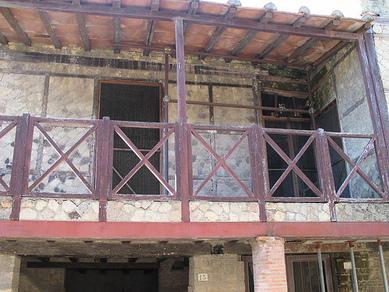The oldest standing timber frames in the world can be found in Italy, in the excavations of Pompeii and Herculaneum, both of which were buried by the eruption of Vesuvius in 79 AD.
These timber frames should prove interesting to you, Jay, and TCB also.
This is the style Vitruvius calls Opus Craticium and it looks like this:


This is a sort of construction that was used chiefly for apartments and low-end housing, according to Vitruvius (and the example shown supports this, as it was an apartment complex). He thought it inferior a a tremendous risk for fire or falling down.
Of particular interest is the complete lack of any sort of bracing, excepting the double horizontal construction seen in the first picture at the top of the walls. The buildings appear to have relied almost entirely on the infill to maintain their shape.
This example is of stone, though Craticium refers to reeds and Vitrivius spoke generally of an infill more like waddle and daub (thus his aversion to the system as cheap and prone to fire)
Some historians speculate Medieval Swiss and South German half timbering may have roots in this style of building, due to the obvious similarities (The Romans may have adopted it from Syria or Persia, by extension suggesting a possible ancient link with the Dhajji Dewari or the Himis style practiced in modern Turkey.
I am skeptical of any strong relationship, other than the idea that the Romans were the inspiration for the concept of Half timbering in Europe while the overall framing methods tended toward the systems used in all wood construction from various Germanic and Celtic sources.
It should be noted that the structure in the picture is said to be in a dangerous state and is not open to the public.